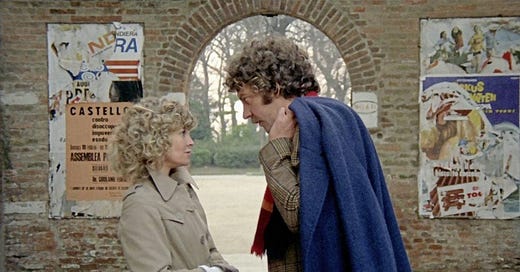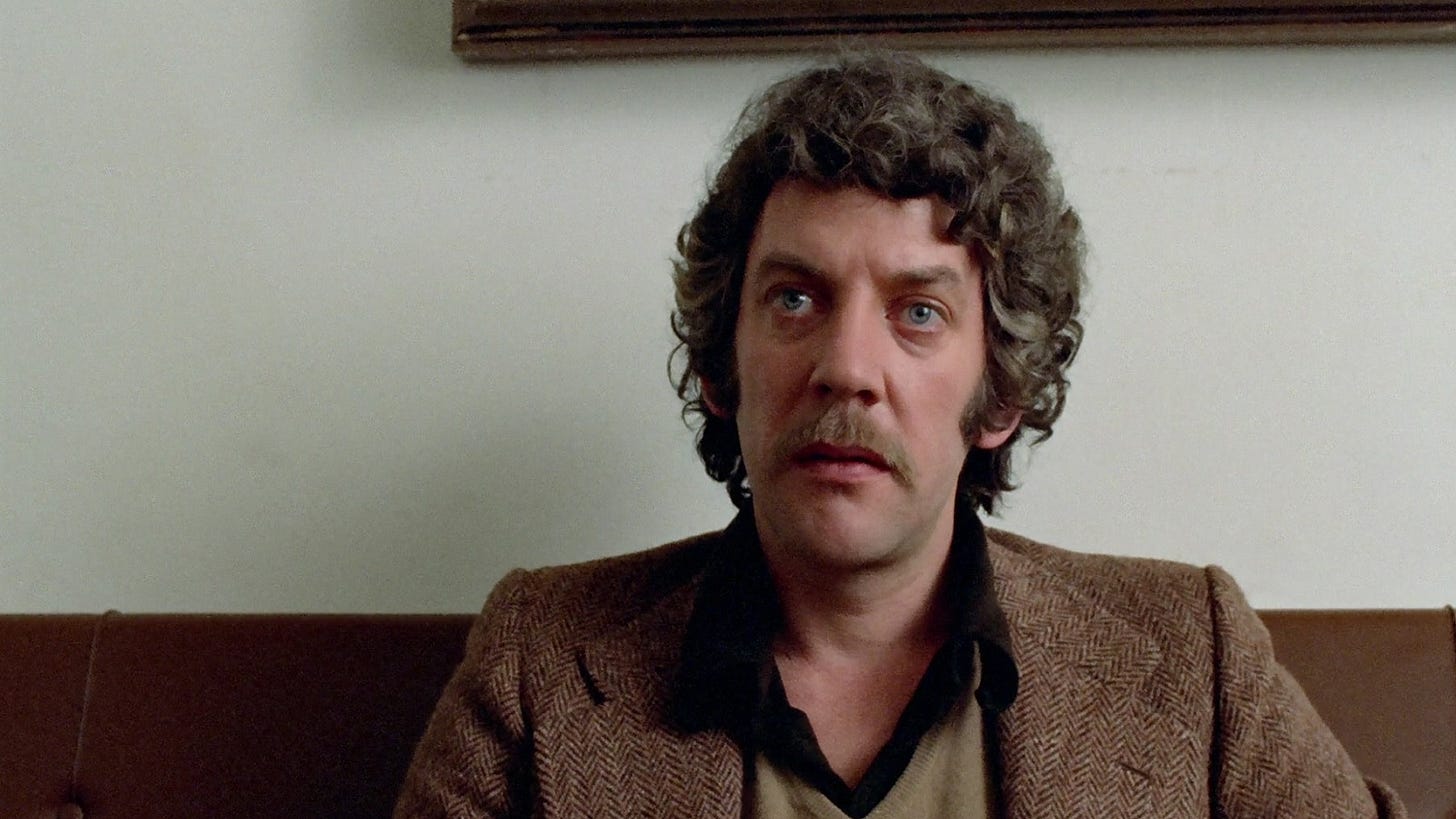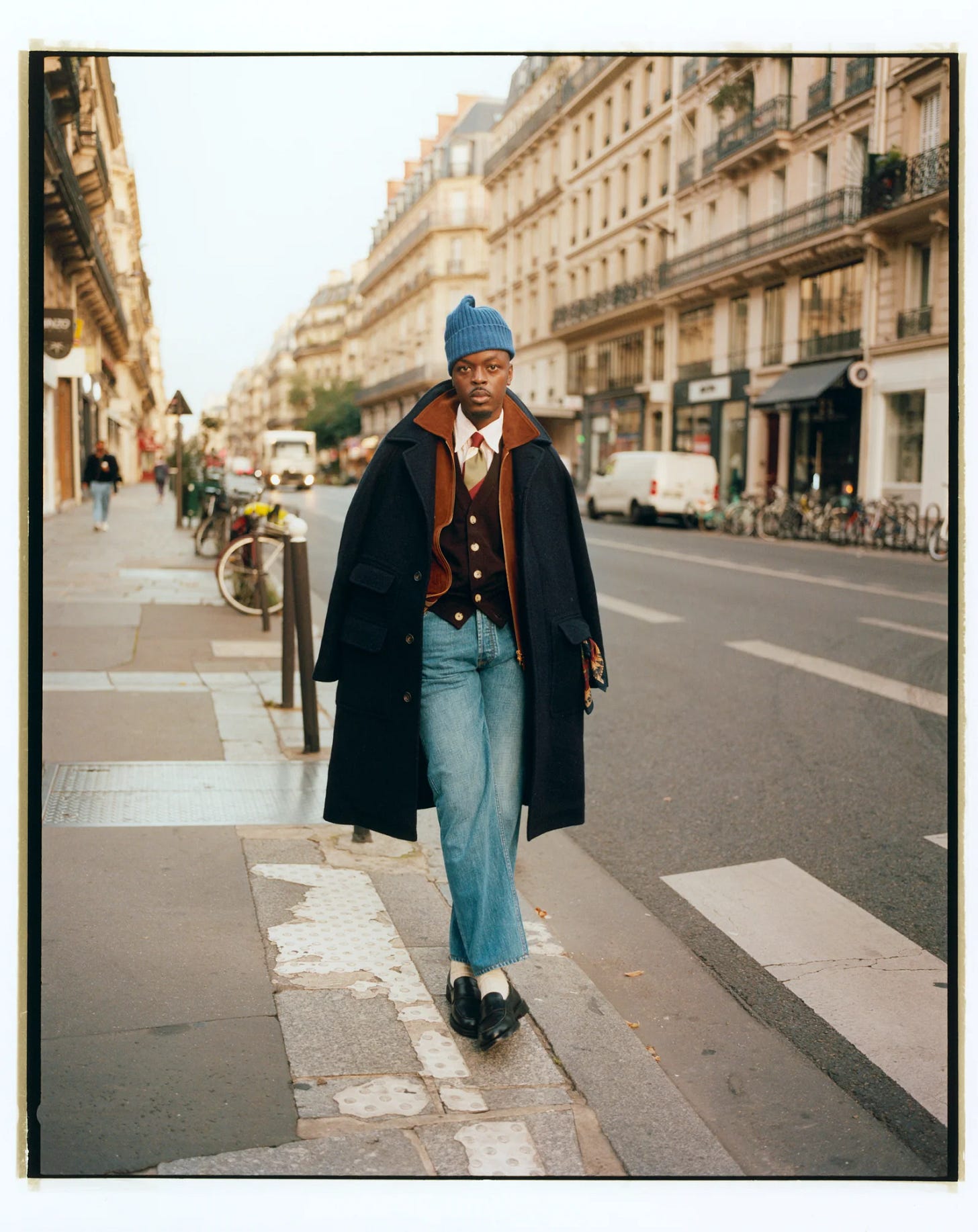We All Dress Like Donald Sutherland Now
What an erotically charged 1970s psychological thriller says about menswear in 2023.
Thank you for reading The Search Continues. At this time the newsletter is free to read, and I appreciate all of your subscriptions. If you feel so inclined to upgrade to a paid subscription you’ll have my eternal gratitude for financially supporting this experiment, and a leg up when paid subscriber-only content is rolled out in the future.
For the last Christmas before our son was born, my wife and I traveled to Venice. Upon our return to Boston, while I was still wandering Venice’s streets each night in my dreams, I decided to fire up Don’t Look Now, the 1973 horror-thriller starring Donald Sutherland and Julie Christie set in the City of Canals.
The exceedingly strange and at times disquietingly sexy film is excellent—but I’m not here to talk about its merits as a movie (and honestly, the less you know about its plot going in, the better). But what gripped me on this particular rewatch was how Donald Sutherland’s character, an American art restorer grieving the death of his daughter while catching increasingly upsetting vibes in Venice, dresses. It’s original and funky in the that many ‘70s leading men dressed, only it doesn’t seem confined to its times. As a matter of fact, it feels very 2023.
Allow me to explain. Tailored clothing, in a world increasingly divorced from dress codes, is paradoxically more difficult to wear in our dressed-down present. You don’t want to look as if you’re cosplaying as a Peaky Blinders or Mad Men cast member, nor do you wish to present as someone hounded into a coat-and-tie for their 10 a.m. court appearance. You want to wear the tie and jacket but you want to appear at ease, as if the ensemble is not an obligation but a natural extension of your personality.
This is easier said than done. But in the film, Sutherland’s character John Baxter pulls it off with aplomb. First there’s the topcoat he spends much of the film in, a long, flowy coat with notched lapels and side-entry pockets that would be quite conservative if it were not a brilliant shade of royal blue. This electric hue, in contrast to the expected black or charcoal that would be donned by a lawyer or banker of the same era, instantly sets him apart as a man who chose to wear such an overcoat. Its brilliant color is then set against a checked scarf in blazing shades or orange, red and yellow, adding a bit of whimsy while setting up a striking contrast.
Elsewhere, we see Baxter in one real coat-and-tie get-up in which the supposed formality of the clothing is offset by 1.) The scale of the exploded glen plaid pattern of his tweed jacket, 2.) The unusual choice of a soft yellow shirt with long point collars, and 3.) The casualness of an earth-colored tie. Every part of the outfit communicates that Baxter, who spends much of the film experiencing dread in crumbling churches and half-empty cafes, doesn’t need to be wearing a tie and jacket, but has chosen to do so in accordance with his own aesthetic preferences.
There’s another, more casual tailored look from the film, in which Baxter wears a rust-colored herringbone tweed jacket with an open-necked black shirt and an oatmeal-colored v-neck. While it’s based around a common-enough staple of tailoring, the herringbone tweed, the dark shirt with its floppy, open collar brings its formality down a notch (and yes, ups the ‘70s sexiness) while the lighter-colored, neutral sweater keep it from being too showy or high-contrast.
Reviewing Baxter’s style, I couldn’t help but think of what some of my personal favorite brands have been doing with tailoring for the last few seasons. In particular Drake’s, which has been fighting the good fight to making tailoring a little bit weirder, and by consequence, wearable and relevant.
What I admire most is that few pieces from Drake’s standout as hair-raising novelties: when viewed in isolation its Harris Tweed jackets or Fair Isle sweaters are quite conservative. But brand look books and editorials see them styled in unusual combinations with deep, rich colors, making the sum feel as dress-code defiant as a T-shirt and sneakers even when rendered from the stuff of classic menswear. This, essentially, is what Sutherland’s character is doing in the film—and what I intend to do this fall.
Cut, Make & Trim
I wrote about Andrew McAteer the other week for Robb Report. The stories I enjoy most are about individuals going about their own thing, with nary a moodboard marketing dollar in sight. That’s certainly the case with McAteer, a former antique restorer that taught himself to make shoes (and some seriously cool looking bit loafers) in his studio in Queens.
I also wrote the ol’ Best New Menswear Roundup at RR.
On Saturday I popped into New York for a quick day trip. It was a perfect autumn day in Manhattan—a crisp, sunny 50-ish degrees. I had a few work appointments and in my free time made it to a holiday pop-up hosted by Sprezza, where I managed to meet a few folks I’d emailed or even interviewed with multiple times but never met in the flesh—Peter Middleton of Wythe, Mike McLachlan of Manresa and Sam Zollman of Slow Process. It was a delightful reminder of how many familiar folks you can bump into in a city of 8 million or so.
Wynona is a new Canadian menswear brand that I had the opportunity to write about last summer. They’ve just launched their first fall/winter collection, and I can’t stop thinking about their Enzo duffel coat.










Hi Eric, love the article. When you make the comment about how drakes is making tailoring “weirder” consequently making it easier to wear, how do you bridge the gap or bringing weirdness to the masses? I think of weirdness going to the esoteric fashion sense of the runways and having the reverse effect of the masses not wearing them. Curious to hear your thoughts!